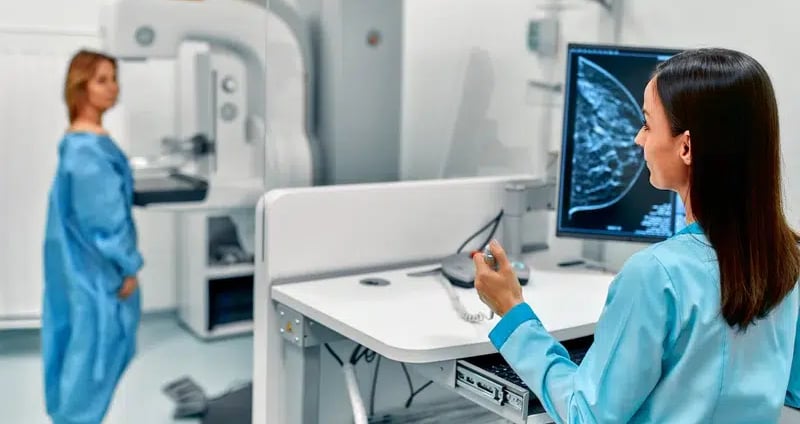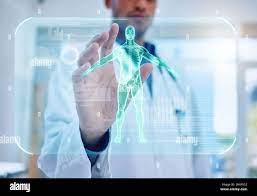Exploring the Impact of 3D X-Ray Imaging on Medical Procedures
In the world of medical imaging, the evolution from traditional 2D X-ray to 3D X-ray imaging has brought about a transformative shift in how healthcare professionals diagnose and treat various conditions. Traditional X-rays have long been a vital tool in diagnosing fractures, infections, and other medical conditions, but they often provide a limited, flat view of the body. With the advent of 3D X-ray imaging, doctors and specialists now have the ability to view patients' anatomy in much greater detail, which ultimately leads to more accurate diagnoses and improved treatment outcomes. This blog post will explore the impact of 3D X-ray imaging on medical procedures and why it's quickly becoming a cornerstone of modern healthcare.
3/18/20254 min read


1. What is 3D X-Ray Imaging?
3D X-ray imaging, also known as cone-beam computed tomography (CBCT), is an advanced imaging technique that creates three-dimensional images of the body by rotating an X-ray source around the patient. A series of two-dimensional images are taken from different angles and then reconstructed into a 3D image, offering a much more comprehensive view of the area being examined.
This technology can be applied to various fields of medicine, including dentistry, orthopedics, oncology, and cardiology, offering a significant advantage over traditional 2D X-ray methods.
2. Improved Diagnosis with 3D Imaging
One of the key benefits of 3D X-ray imaging is its ability to provide clearer, more detailed images of complex anatomical structures. Traditional 2D X-rays often lack depth, making it difficult to assess the full extent of conditions that affect bones, tissues, or organs located in different planes of the body.
With 3D imaging, doctors can visualize organs, bones, and tissues from multiple angles. This capability allows for a much better understanding of a patient's condition, especially when diagnosing fractures, tumors, and malformations. For example, dentists can use 3D X-rays to assess tooth roots, bone structure, and jaw alignment, leading to more accurate diagnoses for conditions like impacted teeth or periodontal disease.
Key Benefits:
Enhanced visualization of structures in three dimensions.
More accurate diagnosis of complex or subtle conditions.
Reduction in the need for additional imaging tests.
3. Precision in Treatment Planning and Surgery
The precision offered by 3D X-ray imaging is particularly crucial in surgical planning. Surgeons can use detailed 3D models to plan procedures with greater accuracy and confidence. In orthopedic surgery, for example, 3D X-ray images can help surgeons evaluate bone fractures, joint problems, or the alignment of implants before performing surgery. This reduces the risk of complications and ensures better outcomes for patients.
For dental implant procedures, 3D X-ray imaging allows the dentist to assess the bone density and location of nerves, minimizing the risk of damage and ensuring that the implants are placed with perfect precision.
Key Benefits:
More accurate pre-surgical planning.
Reduced risk of complications during surgery.
Greater precision when placing implants or conducting minimally invasive procedures.
4. Reducing the Need for Invasive Procedures
3D X-ray imaging can also help reduce the need for invasive diagnostic procedures, which can be painful, risky, or require longer recovery times. With 3D imaging, healthcare providers can obtain a comprehensive view of the issue at hand without having to rely on exploratory surgery or biopsies.
In certain cases, 3D X-ray imaging can even replace the need for other imaging methods, such as MRI or CT scans, which are more costly and may require longer procedures.
Key Benefits:
Non-invasive and minimally disruptive to patients.
Reduces reliance on more invasive, costly diagnostic procedures.
Faster diagnosis and treatment planning.
5. Impact on Oncology
In the field of oncology, 3D X-ray imaging is revolutionizing how doctors diagnose and treat cancer. With the ability to examine tumors from every angle, doctors can determine not only the tumor's location but also its size, shape, and potential spread to surrounding tissues. This is crucial for planning precise radiation therapy or surgical interventions.
In particular, cone-beam CT (CBCT) systems allow oncologists to track the growth of tumors over time, monitor the effectiveness of treatments, and adjust plans accordingly, which is vital for achieving better patient outcomes.
Key Benefits:
More accurate tumor detection and assessment.
Better planning for radiation therapy and surgery.
Enhanced ability to track tumor response to treatment.
6. 3D X-Ray in Orthopedics and Joint Replacement
3D X-ray technology has made a huge impact in orthopedics, particularly for patients requiring joint replacement or spine surgery. By capturing a full 3D image of the bones, joints, and spine, doctors can better understand the extent of damage, disease, or deformities. For instance, in hip replacement surgery, 3D imaging helps surgeons measure the size and alignment of the hip joint, reducing the risk of improper placement and improving recovery times.
Key Benefits:
More detailed and accurate evaluation of musculoskeletal conditions.
Better alignment of implants in joint replacement surgery.
Reduced risk of complications and improved recovery.
7. Expanding Access to Advanced Imaging in Remote Areas
3D X-ray imaging is not just changing healthcare in major medical centers; it’s also improving accessibility in rural and remote areas. Many new portable 3D X-ray systems are compact and can be easily transported to underserved locations. This allows healthcare providers to offer high-quality diagnostic imaging where it was previously unavailable, ensuring that more people can receive timely diagnoses and treatments.
Key Benefits:
Increased access to advanced diagnostic tools in rural or underserved areas.
Portable systems that can be easily transported and used in various environments.
Faster access to high-quality care, even in remote regions.
8. Reduced Radiation Exposure
Although traditional X-rays expose patients to a certain amount of radiation, newer 3D X-ray systems are designed to reduce radiation exposure while still delivering high-quality images. Cone-beam CT, for example, typically uses lower doses of radiation compared to conventional CT scans, making it a safer alternative for patients, especially those who may need repeated imaging.
Key Benefits:
Lower radiation exposure for patients.
Safer imaging with high-quality results.
Ideal for pediatric and long-term patients who require repeated imaging.




Reference Website Link:
RadiologyInfo.org (American College of Radiology) – https://www.radiologyinfo.org/
National Institute of Biomedical Imaging and Bioengineering (NIBIB) – https://www.nibib.nih.gov/
Siemens Healthineers – https://www.siemens-healthineers.com/
ScienceDirect - 3D X-Ray Imaging Research – https://www.sciencedirect.com/topics/medicine-and-dentistry/3d-x-ray
Health Imaging – https://www.healthimaging.com/
